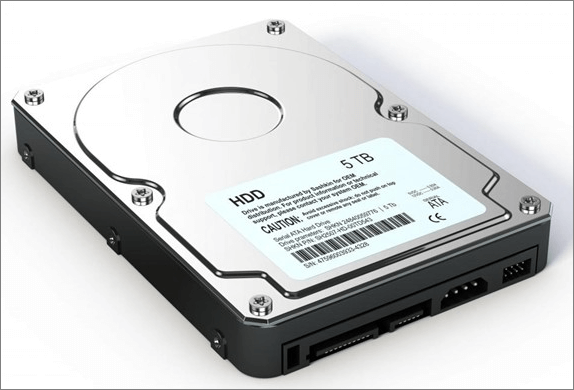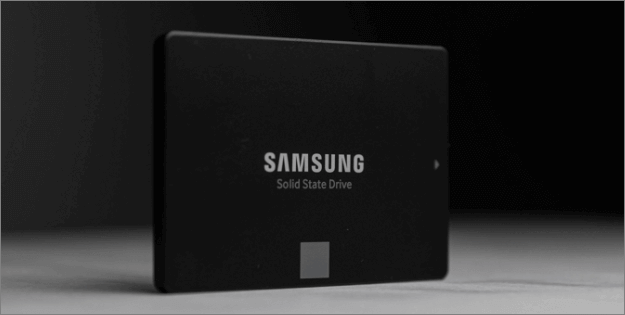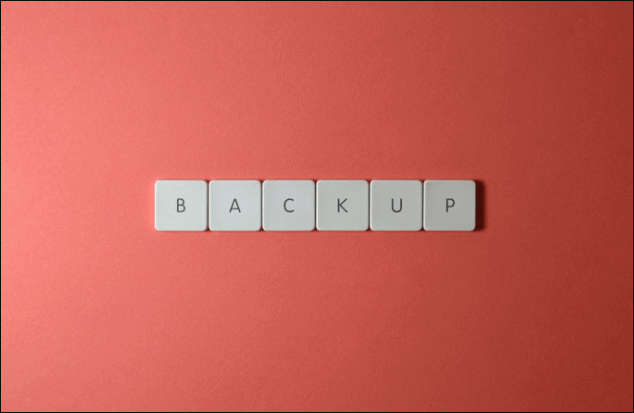Best Way to Store Digital Photos Long Term
Digital Photography is a trend with several advantages over traditional photos or film, but it also has many disadvantages. One of the prime disadvantages of digital photography is nothing but security! There is always a possibility of damage and loss of digital photography, and if you want to know the best way to store digital photos for a long time, you are on the right page.
Here via this post, we will suggest some of the most effective methods that will help you store your digital photos long-term. So, let's get started with more details.
Top 7 Ways to Store Digital Photos Long Term
When it comes to storing digital photos long term, here we are going to recommend you six most effective ways, which are as follows:
| Workable Solutions | Step-by-step Troubleshooting |
|---|---|
| 1. Use External Hard Drives | You can use external hard drives to store your digital photos for the long term...Full steps |
| 2. Use USB Flash Drive | Flash USB drives are very convenient and now can store more files...Full steps |
| 3. Save Photos to an SSD | The next most effective way is to store your digital photos inside SSDs...Full steps |
| 4. Store to the Cloud Drive | If you want to avoid your digital photos from any physical damage and...Full steps |
| Other Solutions to Save Photos | Run Backup and Recovery Software > Print These Photos to Save Them...Full steps |
Let's know more details about these storage ways and pros and cons for better understanding.
1. Use External Hard Drives to Store Digital Photos
You can use external hard drives to store your digital photos for the long term. It refers to magnetic storage when it's all about the hard disk. Undoubtedly, people and system manufacturers prefer to use solid-state drives (SSDs), but the old hard disk is still in use as internal and external portable storage units.

Magnetic storage systems can store a massive amount of data with better stability. However, it is measured in units as great as terabytes when it comes to capacity. But the drawback to external hard drives is physical damage. So if you want to use an external hard drive, we recommend you keep an additional hard drive as a backup storage device and keep it in a secure location.
Pros
- Comparatively less expensive
- Stable
- Huge storage capacity
Cons
- The moving physical parts always make hard drives more vulnerable
- Can quickly lose in any disaster
- Can fail more than SSDs
Also read: How to Recover Data from External Hard Drive
2. Save Digital Photos with USB Flash Drive
You can save your digital photos inside a Flash USB drive for the long term. Flash USB drives are very convenient and now can store more files than ever before. Moreover, because of the compactness of the USB drive, it looks attractive as a storage and sharing loads of images at a time. You can use a USB drive for long-term storage solutions, but they are not ideal because USB drives can be damaged or lost easily. In addition, the information the USB drive holds can easily be erased.

Pros
- Inexpensive
- Compact and portable
- Easy to share
Cons
- Easily lost or damaged
- Limited capacity
Also read: How to Recover Files from USB
3. Save Photos to an SSD for Long-term Protection
The next most effective way is to store your digital photos inside SSDs, since SSDS lack moving parts that are faster, more reliable, and quieter than the traditional hard drives. In addition, SSDs frequently use electric circuits and flash memory to store mostly secure data. According to research, SSDs can store data for several years without any power supply, which is the most assured storage component nowadays. No doubt SSDs are costlier than conventional Hard drives but worthy for sure.

Pros
- Because of their small size, these are very portable
- SSDs lack moving parts which make this reliable and durable
- Quiet and fast in terms of operation
Cons
- SSDs costs more than traditional magnetic field hard drives
- These are more vulnerable than cloud storage
Also read: SSD Data Recovery Software for SSD
4. Store Photos to the Cloud Drive
If you want to avoid your digital photos from any physical damage and store them for the long term, we recommend you save your images on cloud storage. Cloud storage is currently one of the most popular storage options.

Commonly uploading files to the cloud from the system is very easy. You have several options like Dropbox, Apple iCloud, Google Drive, and Microsoft One Drive, which can easily integrate into any device and system when it comes to cloud storage. Every cloud platform provides some free spaces for storage, but if you need extra storage, you have to pay a certain amount. Overall, cloud storages are always the best way to store digital photos and other important files.
Pros
- It can access from anywhere
- It can't be physically lost or destroyed
- Changeable size options
Cons
- It requires an internet connection
- You can't control it physically
- Expensive compared to traditional storage solutions
Also read: Cloud Drive Data Recovery: Recover Data from WD, Dropbox, Google
5. Run Backup and Recovery Software
If you want a good and long-term solution to store your digital photos, we recommend running backup and recovery software. Usually, people think their photo files are safe on phones, laptops, or tablets, but what if they are misplaced permanently due to file corruption or other reasons? Nothing you run backup and recovery software.

Any natural disaster can easily damage electric storage devices, so what's the solution? In such cases, you can go for services like Live drive and Crash Plan, which will store the whole backup of your systems without your permission. So always invest in such backup and recovery software to keep your digital photo or data secure for the long term.
Pros
- It comes with an automated backup feature
- You can quickly recover data with the help of these tools
- Best for long term storage option
Cons
- You need to install software on your system or device
- You have to pay subscription fees for the functionality because these are paid tools
6. Print These Photos to Save Them
Last but not least, you can print your digital photos into a physical image and frame-up them, and store them for a long time. Nowadays, people don't want to keep paper photos, but undoubtedly, this is a great way to save pictures. By printing digital images, you not only store photos, but you can also display those. You can display photos with photo frames in your home or put those in a photo album; easily print your digital photos at home if you have a good printer. Or you can also give a photography shop to print. We will not recommend that you store your entire digital photo library because it will be costly. You can only print special and memorable photos capturing moments for you.

Pros
- Easy to show anybody and delivers a better personal experience
- You can easily print it at your home if you have a good printer
- Helpful in case of loss of digital photo file
Cons
- It can be physically damaged if not handled with care
- Costlier if you want to print bulk digital photos
7. Save Photos with Secure Digital Cards (SD Card)
You can store your digital photos inside an SD card. SD cards are rectangular-shaped tiny disks that easily fit inside any compatible electronic device. These are available with different storage options and can save a vast amount of data. Because of its compactness and portability, people love to use SD cards. Still, the demerits of SD cards are that they can easily misplace minimal lifespan and can easily be corrupted or damaged during the power-on/off cycle. So if you want to store photos for a few months, you can go with SD cards.

Pros
- Capacity to store the massive amount of data in a small footprint
- Portable and small
- You can easily swap amid compatible devices like systems, cameras, and mobile phones.
Cons
- Easily damaged
- Easy to misplace
- Limited lifespan
How to Recover Digital Photos from Storage Devices
For any possible reason, if you lost digital photos from storage devices, the only way to recover those files is by using a reliable third-party data recovery tool. We will recommend you use the Deep Data Recovery. It is an advanced data recovery tool with advanced features like deleted file recovery, formatted recovery, raw recovery, and many more.
Let's know some of the advantages of this tool
- This tool supports all kinds of photo formats like .png, .jpg, .jpeg, and much more.
- Photo recovery accuracy is very high.
- Easy to use and can recover files in 3 straightforward steps.
- Retrieve photo or data from reformatted drives.
- This tool is compatible with USB, SSD, SD card, CF card, HDD, and more.
Step 1. Launch Deep Data Recovery. Select file types and click "Next" to start.

Step 2. Find your SD card, camera, or hard drive partition where you deleted or lost pictures, then click "Scan".

Step 3. After the scanning finishes, choose "Pictures" in the left panel to quickly filter photos.

Step 4. You can preview the pictures you want to recover. Then, click "Recover" and choose another location to save the recovered data.
Conclusion
No doubt digital photos are best nowadays, but when it comes to storing them for the long term, you can choose any of our recommended ways. Every way has its pros and cons so, always choose the best method according to your requirement. Unfortunately, if you lost your digital photo from any drive like USB, SSD, USB drive, or HDD, try the Deep Data Recovery recovery tool to recover your photo files.
Related Articles
- Restore Deleted/Lost ASUS Data with ASUS Data Recovery Software
- How Do You Fix 'Word Cannot Open the Document: User Does Not Have Access Privileges' Error? Fixes Are Here!
- System_Thread_Exception_Not_Handled on Windows 10/11, Fixed Now
- USB Flash Drive & External Hard Drive - Everything You Should Know